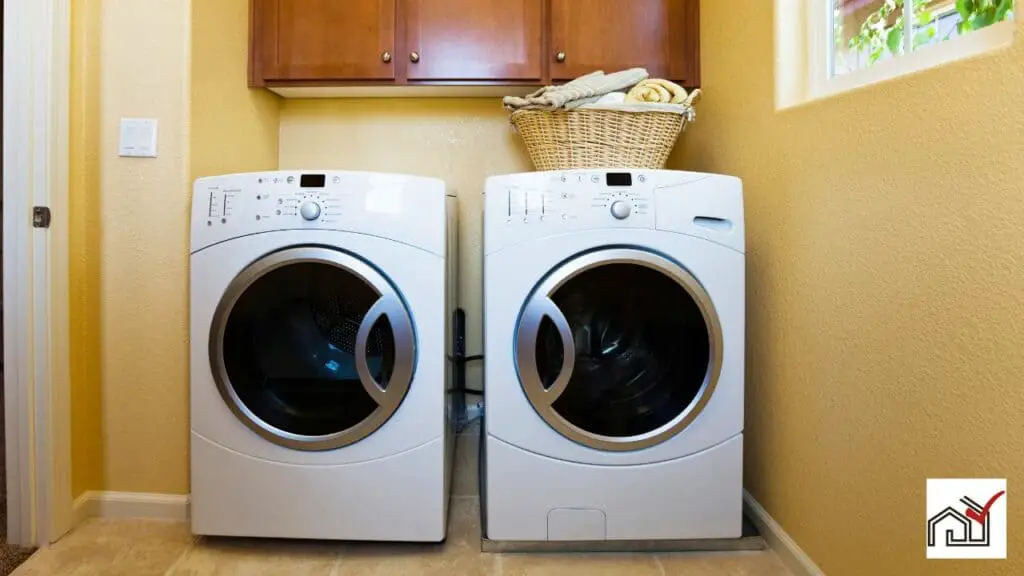To wash a queen comforter, you need a washing machine with a capacity of at least 3.5 cubic feet. This allows the comforter to move freely for effective cleaning. A smaller washer may not clean well and could damage the comforter and the machine.
Matching the comforter size with the washer capacity is important for the best cleaning results and to extend the life of your comforter.
Understanding Washer Capacities
When choosing a washing machine, it's important to consider its capacity. The capacity, measured in cubic feet, affects how much laundry it can wash in one cycle. For washing large items like queen comforters, a large capacity washer is necessary.
A washing machine with at least 3.5 cubic feet of space can usually handle a queen-size comforter. For better cleaning and to avoid overloading the machine, a larger washer is recommended. This allows the comforter to move freely and the machine to operate effectively.
Front load washers typically use space more efficiently than top load models without an agitator. This can mean fewer wash cycles, saving energy and water which benefits both the environment and household costs.
Dimensions of Queen Comforters
When choosing a washing machine for a queen comforter, consider the size of the comforter, which typically measures between 86 to 94 inches in length and 96 to 100 inches in width. A washing machine with a capacity of at least 3.5 cubic feet is recommended to accommodate a queen comforter, but a larger capacity of 4.5 cubic feet is preferable to allow for ample movement and effective cleaning.
The capacity of the washing machine should match the dimensions of the comforter to prevent bunching and ensure thorough washing. A larger washer can also handle more laundry at once, which is beneficial for households with more laundry needs.
Make sure the washing machine fits in the designated space in your home and meets the laundry requirements of your household. A compatible washer size ensures the queen comforter is washed properly, maintaining its quality and cleanliness.
Ideal Washer Size for Bedding
A washer with a minimum capacity of 4.5 cubic feet is recommended for cleaning queen-sized comforters and other large bedding items. This size allows the bedding to move freely during the wash, which is crucial for thorough cleaning and to prevent damage to the washer from overloading. Both top-loading and front-loading washers with this capacity can handle large items; the choice depends on personal preference and the layout of the laundry area.
Adequate capacity in a washer also contributes to more effective drying, as the comforter can be spun evenly, reducing drying time. While larger washers are available, they may not be the most energy and water-efficient option for smaller households. On the other hand, washers that are too small may necessitate extra wash cycles for bedding, which can be inefficient.
A washer with a capacity of about 4.5 cubic feet is generally an efficient choice for most households, balancing the need for cleaning large items with energy and water usage.
Top Load Vs Front Load Washers
Consumers choosing between top load and front load washers must consider their differences in ergonomics, efficiency, and design. Both types can fit a queen comforter, but they operate differently.
Top load washers offer the convenience of adding items mid-cycle and easier loading due to less bending. They clean by moving laundry through water using an agitator or impeller, which can be harsh on clothes.
Front load washers use a tumbling action to clean, which is gentler on fabrics and can result in better cleaning and faster drying due to more effective water extraction. They may appear to have less visible capacity but can clean bulky items efficiently without an agitator. Front loaders are also more energy and water-efficient.
Regardless of type, it's crucial not to overfill the washer to ensure items like comforters can move freely and be cleaned properly. Choose a washer that matches your laundry volume and household size to avoid frequent cycles or excess capacity.
Tips for Washing Bulky Items
For washing bulky items like queen comforters, ensure the washer has adequate space for the item to move and rinse properly. Use a washer with a minimum capacity of 4.5 cubic feet, suitable for up to a 20-pound load, to wash a queen comforter effectively.
Always follow the care instructions on the comforter's label. Choose a gentle cycle for bulky items, if possible, and a high-water level for proper detergent distribution and rinsing. Balance the load to prevent washer damage and uneven washing.
After washing, consider an extra rinse to eliminate detergent residue. If the comforter is safe for the dryer, use a low heat setting and add dryer balls to fluff it up. If it's not dryer-safe, air dry by laying it flat or hanging it to prevent mildew.
These steps will help clean bulky items properly and maintain their condition.
Washer Features to Consider
When choosing a washing machine for cleaning a queen-sized comforter, look for one with a large capacity and a stainless steel drum. The durable drum accommodates bulky items and prevents fabric damage. Opt for a model with multiple wash cycles, including a gentle or bedding cycle, to properly clean the comforter without harming the material. Cold water settings are also important to maintain the comforter's colors and textures.
Adjustable water level options are beneficial for washing different load sizes effectively. For a queen comforter, a higher water level is recommended for thorough cleaning. Using dryer balls during the wash can help with the circulation of water and detergent.
Choose a washing machine with an extended spin cycle to remove excess water, reducing the drying time and energy usage. This ensures the comforter dries completely and retains its quality.
Maintaining Your Comforter's Quality
To maintain the quality and freshness of your queen comforter, use a washing machine with at least a 5.0 cubic feet capacity. This ensures the comforter can move and clean properly without being cramped. Overloading the washer can lead to ineffective cleaning and damage the comforter.
For drying, a dryer with a minimum of 7.0 cubic feet is recommended to allow sufficient air circulation, which helps to dry the comforter faster and reduces the risk of heat damage.
Wash your comforter infrequently but efficiently to preserve its quality. If you don't have access to a large enough washer or dryer, consider using a laundromat's larger machines. Proper equipment and care will prolong the life of your comforter.





